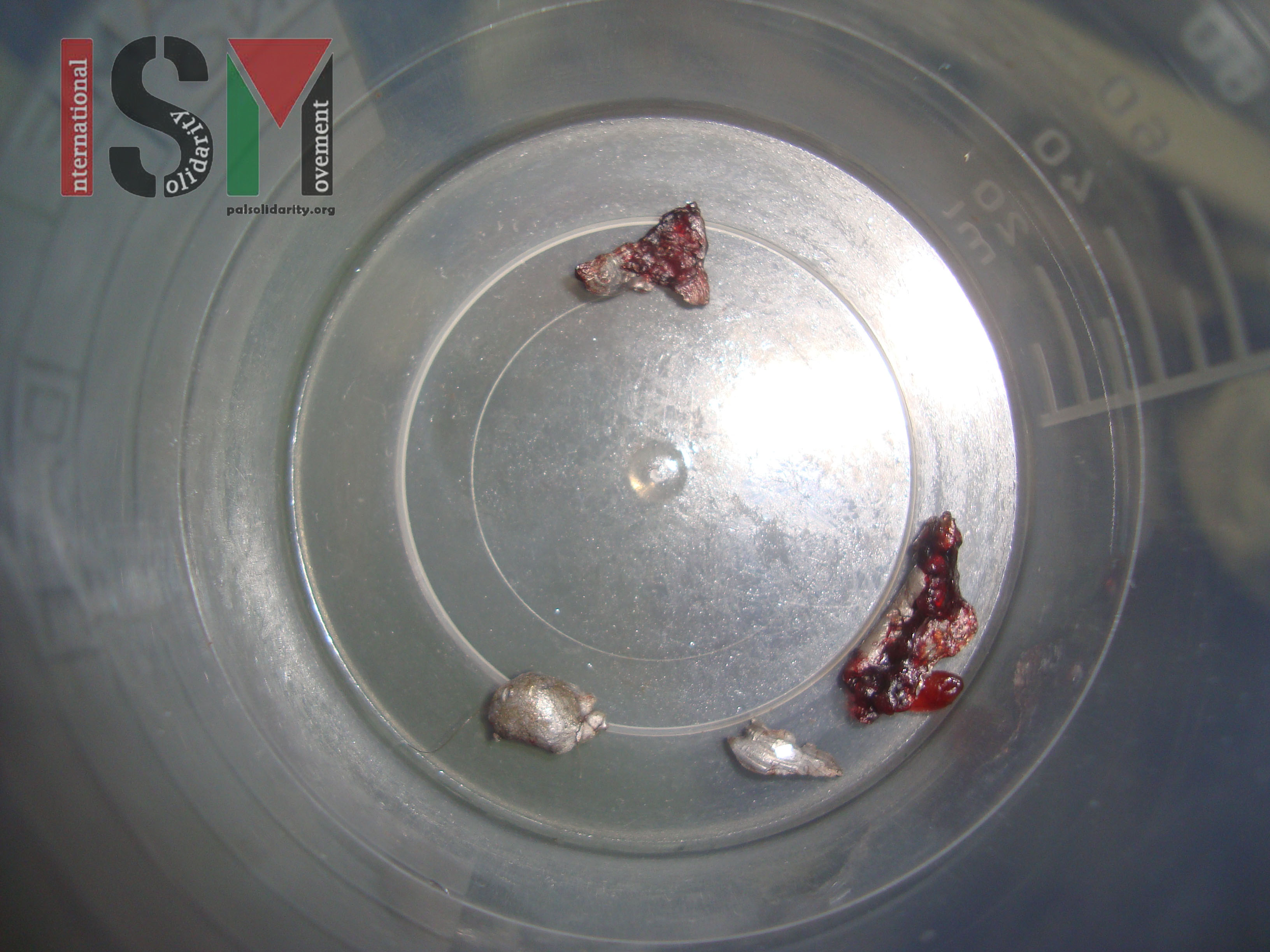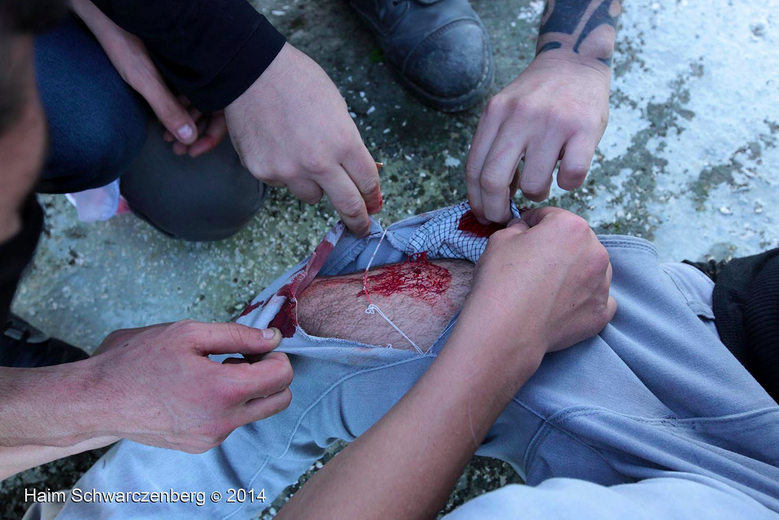Tag: Live Ammunition
-
Journalist most recent victim of Israeli military violence at Kufr Qaddum
9th December 2014 | International Solidarity Movement, Nablus team | Kufr Qaddum, Occupied Palestine Bashar, a journalist from Palestine TV, was shot in the left leg at Kufr Qaddum on Friday the 5th of December 2014. The weekly demonstration aims to highlight the issue of the road that has been closed to Kafr Qaddum and…
-
More Palestinian protesters shot with .22 live ammunition
6th December 2014 | International Solidarity Movement, Ramallah team | Nabi Saleh, Occupied Palestine Yesterday, Israeli soldiers invaded Nabi Saleh during the Palestinian village’s weekly Friday demonstration and shot one young Palestinian in the leg with .22 caliber live ammunition. The soldiers also fired tear gas canisters at demonstrators, along with more rounds of the .22 live caliber…
-
UPDATED: 18-year-old Palestinian and ISM volunteer both shot in the chest with .22 live ammunition
28th November 2014 | International Solidarity Movement | Kufr Qaddum, Occupied Palestine Update 12th December: The Italian activist know as Patrick is returning today to demonstrate in Kufr Qaddum. Last Friday, while Patrick was still hospitalised, the residents of Kufr Qaddum flew Palestinian and Italian flags in solidarity. Patrick required surgery to remove the bullet…



